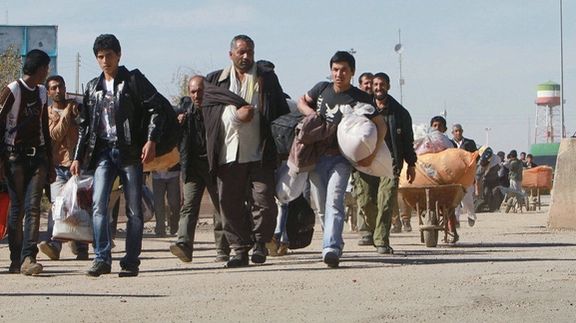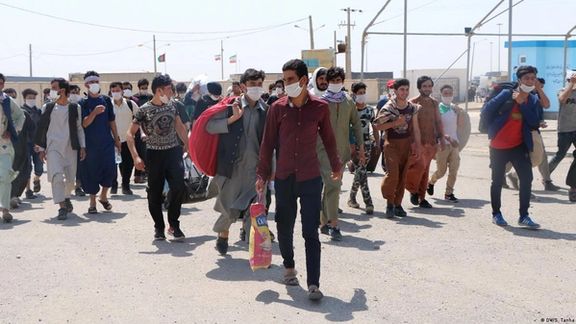Government Moves Spark Concerns Of Afghan Mass Naturalization In Iran

An official on Sunday told the parliament that immigrants in Iran number over 8 million despite interior minister’s much lower figure of five million last month.

An official on Sunday told the parliament that immigrants in Iran number over 8 million despite interior minister’s much lower figure of five million last month.
Interior minister Ahmad Vahidi had reported this lower figure on September 27, stating that there were "around five million Afghans in Iran." However, Mohsen Najafikhah provided a substantially higher estimate of 8.4 million immigrants.
Afghans, often referred to simply as ‘foreign nationals’ by officials and the media, make up the majority of immigrants in Iran. The census of 2016 found the presence of over 1.5 million Afghans followed by 34,500 Iraqis and 14,320 Pakistanis.
“The question is whether the number of foreign nationals in the country has increased since [September] or the statistics offered by the interior minister was not right,” Faraz Daily news website asked Monday.
Afghans first came to Iran as refugees in early 1980s and later as economic migrants but before the Taliban takeover of the government in Afghanistan in 2021 their numbers rarely rose above two million. Around 780,000 had obtained refugee status and were not considered illegals.

In April 2022, Javad Hedayati, the director general of the International Transit Bureau of the Transportation Organization, reported a significant increase in the number of Afghans entering Iran through official borders since the Taliban takeover. He stated that the number had risen to as many as 5,000, compared to the previous range of 700-800. Notably, there were no available statistics on the number of illegal immigrants.
The government has not taken any steps to slow down the deluge of refugees, leading to accusations that the clerical regime might have sinister plans to use the Afghans, who speak Persian, for political or military aims.
In late September, a member of the parliament’s National Security and Foreign Policy Committee, Mahmoud Ahmadi-Bighash, disclosed plans to grant Iranian citizenship to legal Afghan immigrants. Ahmadi-Bighash claimed they number between eight to ten million.
According to Ahmadi-Bighash, a former governor of the northeastern North Khorasan Province, the primary aim of the plan is “population transfer” and legalizing the presence of millions of Afghan immigrants.
Referring to the parliament’s approval of a bill to establish a “national immigration organization” in November 2022, he claimed that those behind the plan want to “facilitate the entry and residence” of Afghan citizens.
In recent weeks, the government’s political rivals have repeatedly warned about its “open borders” policy and the possibility of hidden agenda with hardliners responding to such criticism by accusing critics of inciting “Afghan-phobia” amid fast-growing anti-Afghan sentiments on social media and violence against the immigrants.
Some government critics claim authorities are actively encouraging the growth of the Afghan population with incentives such as subsidized energy and food to remedy the problem of population decline or even to bolster its military by recruiting young Shiite Hazara Afghans.
During the Sunday session, lawmakers assigned the interior ministry the task of establishing a national immigration organization in collaboration with the Secretariat of the Supreme National Security Council.
The government claims that by forming such an organization it will be able to “systematize” the data on foreign nationals’ entry, exit and expulsion for which, according to Najafikhah, ten different government departments are currently responsible.
Government’s critics allege that the plan may be a cover for naturalizing Afghans in Iran. “A national immigration organization, if formed, can easily turn into an organization for issuing residence permits,” Faraz Daily’s report said.
The report pointed out that the government bill includes provisions for offering a series of services – including access to national insurance and benefits – to foreign nationals without citation of allocated budget.
“It is not clear whether the country’s economy is capable of offering these services to so many immigrants, just the same as it is still not clear how many of the 8.4 million are legal immigrants and how many are illegal (undocumented),” the report said.